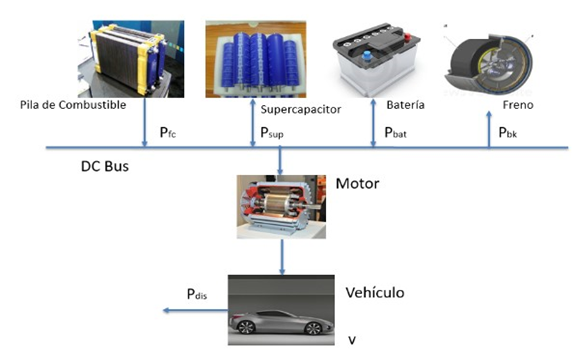Estrategia de gestión de la energía en vehículos eléctricos con pila de combustible y sistema de almacenamiento híbrido utilizando control predictivo económico
Contenido principal del artículo
Resumen
En este trabajo se propone el control predictivo económico como técnica para la gestión energética óptima de un vehículo híbrido. Se describe el modelo utilizado para el control y a partir del mismo se diseña un controlador predictivo económico. Finalmente, se estudia el mejor ajuste de los pesos del controlador que consiga la mayor reducción del consumo de la pila de combustible con la ayuda de baterías y supercapacitores. Para ello se determinan los puntos de consumo máximo y mínimo de la pila de combustible, y se caracteriza el problema de control multiobjetivo mediante la determinación de las curvas de Pareto. El artículo concluye con una discusión de los resultados y los trabajos futuros.
##plugins.themes.bootstrap3.displayStats.downloads##
Detalles del artículo
Número
Sección

Esta obra está bajo una licencia internacional Creative Commons Atribución 4.0.
Los autores que publican en esta revista están de acuerdo con los siguientes términos: Los autores conservan los derechos de autor y garantizan a la revista el derecho de ser la primera publicación del trabajo al igual que licenciado bajo una Creative Commons Attribution License que permite a otros compartir el trabajo con un reconocimiento de la autoría del trabajo y la publicación inicial en esta revista. Los autores pueden establecer por separado acuerdos adicionales para la distribución no exclusiva de la versión de la obra publicada en la revista (por ejemplo, situarlo en un repositorio institucional o publicarlo en un libro), con un reconocimiento de su publicación inicial en esta revista. Se permite y se anima a los autores a difundir sus trabajos electrónicamente (por ejemplo, en repositorios institucionales o en su propio sitio web) antes y durante el proceso de envío, ya que puede dar lugar a intercambios productivos, así como a una citación más temprana y mayor de los trabajos publicados.
